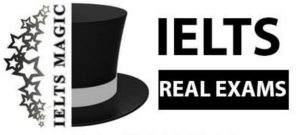PASSAGE 2 The Remarkable Power of Placebos
29 تیر 1403 1403-04-31 14:31PASSAGE 2 The Remarkable Power of Placebos
READING PASSAGE 2
Answer Questions 14 – 26, which are based on the text below
The Remarkable Power of Placebos
A It’s one of our most powerful medical treatments, and certainly our most widely effective. In recent years, it’s been found to help eliminate or lessen the symptoms associated with clinical depression, irritable bowel syndrome, panic attacks, coughing and ADHD, among other conditions. This name of this wonderful treatment? It’s the ‘placebo effect’, the remarkable power of the human brain to unconsciously influence the functioning and perception of the body.
B The term, which is Latin for ‘I shall please’, was first used some time during the 1700s, but the concept itself dates back centuries. Historically, doctors believed that one of their key duties, in addition to curing a patient, was to console him or her, providing a boost to the morale that could help them to get better faster – sometimes in the form of a dummy medicine that had no effect beyond instilling the expectation of improvement in the patient’s brain. It’s now widely recognised that, while largely ineffective in improving objective symptoms, such as high blood pressure or an infection, for instance, placebos are genuinely effective in treating subjective, self-reported symptoms, including all sorts of pain. Placebos can take all sorts of forms: inert sugar pills, sham surgeries and saline injections.
C The singular power of expectations has been demonstrated in a variety of studies. In one, for example, patients given a placebo pill that is referred to as a muscle relaxer will experience muscle relaxation, while those given a placebo called a muscle stimulator will experience muscle tension. The flip side of the placebo, the nocebo effect, is just as powerful – negative expectations can cause as much harm as positive ones can do good. In other studies, it’s been shown that pills which are red, yellow or orange in colour are more likely to provide a stimulating effect, while blue and green ones are more often perceived as sedating. One study even found that bigger pills are better when it comes to placebo performance.
D The science that underlies all of these studies isn’t well understood at this point. Scientists have conducted some imaging research into the brain on placebos, and they’ve found that ingestion of a placebo billed as a painkiller leads to increased activity in several areas of the cerebral cortex, as compared to an actual painkiller. These areas are involved in so- called ‘higher’ functions like memory, attention, thought and consciousness. A pain-killing placebo, it seems, works differently from a painkiller.
E In a recent headache study, conducted by researchers at Harvard Medical School, 66 participants who suffer from chronic migraines were given six envelopes, each containing a pill to be taken after their next migraine attack. Two envelopes were labelled ‘Maxalt’ – the brand name for the widely-used migraine drug rizatriptan – in order to generate positive expectations, while two had no label, to produce neutral expectations, and two were labelled ‘placebo,’ to generate negative expectations. But for each of the three labels, one envelope held a genuine rizatriptan pill, and one contained a placebo. This allowed the researchers to cross-compare the effectiveness of rizatriptan + positive expectations,rizatriptan alone, and rizatriptan + negative expectations, as well as positive, neutral and negative expectations in isolation.
F When the scientists analysed the participants’ self-reported pain reductions after taking the pills, the power of the placebo was proven yet again. People who’d taken a placebo pill labelled Maxalt got just as much pain relief as those who’d taken a Maxalt pill labelled as a placebo. Additionally, people who took a Maxalt correctly labelled as Maxalt reported about twice as much pain reduction as those who took a Maxalt pill labelled as placebo. In other words, in treating a complex, chronic form of pain like migraine, the effectiveness of pure expectations was roughly equal to the effectiveness of the pharmaceutical itself.
G For a doctor, harnessing the placebo’s power doesn’t mean intentionally mislabelling pills. Instead, a doctor could simply provide a slightly more positive message about a treatment, lending the power of expectations to that of pharmaceuticals. ‘When doctors set patients’ expectations high, Maxalt becomes more effective,’ lead author of the study Rami Burstein said in a press statement. Of course, this sort of intentional expectation-setting needs to be done carefully. Doctors have an ethical obligation not to mislead patients or withhold important information. But that doesn’t mean that making sure to provide subtle positive cues about the effectiveness of a medication– especially when those very cues might well make it work more effectively – is a bad idea. As Ted Kaptchuk, one of the study’s co-authors, put it, ‘the placebo effect is an unacknowledged partner for powerful medications.’
Questions 14 – 17
The text has seven paragraphs, A-G.
Which paragraph contains the following information? Write the correct letter, A – G, in boxes 14 – 17 below. NB You may use any letter more than once.
14 an explanation of the neurological process by which placebos work
15 the origin of the word ‘placebo’
16 a recommendation as to how medical professionals can take advantage of the placebo effect
17 mention of how the appearance of placebos can affect how well they work
Questions 18 – 24
Complete the sentences below.
Choose ONE WORD ONLY from the passage for each answer. Write your answers in boxes 18 – 24 below.
18 It appears that placebos can treat or reduce the ……… of a wide range of conditions.
19 The placebo effect happens when our ……… has an effect on how our body feels.
20 Doctors have long believed it to be their responsibility not only to treat patients’ medical conditions, but also to improve their …….. .
21 An example of a situation where a placebo has little or no effect is if a patient has an ………..
.22 It has been shown that patients will feel ……… in their muscles if they are given a placebo called a muscle stimulator.
23 A related phenomenon, known as the ………… effect, convinces people that a treatment will do them harm.
24 Two factors which influence the effectiveness of a placebo pill are its and its size.
Questions 25 – 26
Choose TWO letters, A – E.
Which TWO findings were observed in the Harvard Medical School study?
A Placebos taken with the patient’s knowledge were reported as less effective than those taken without their knowledge.
B People who took Maxalt without realizing it reported less pain relief than those who were aware of taking it.
C Where pills had misleading labels, the placebo and the genuine drug appeared to produce a similar level of pain relief.
D Maxalt without a label and Maxalt labelled as a placebo appeared to be equally effective.
E People who were given no indication of what they were taking reported the lowest levels of pain relief.







